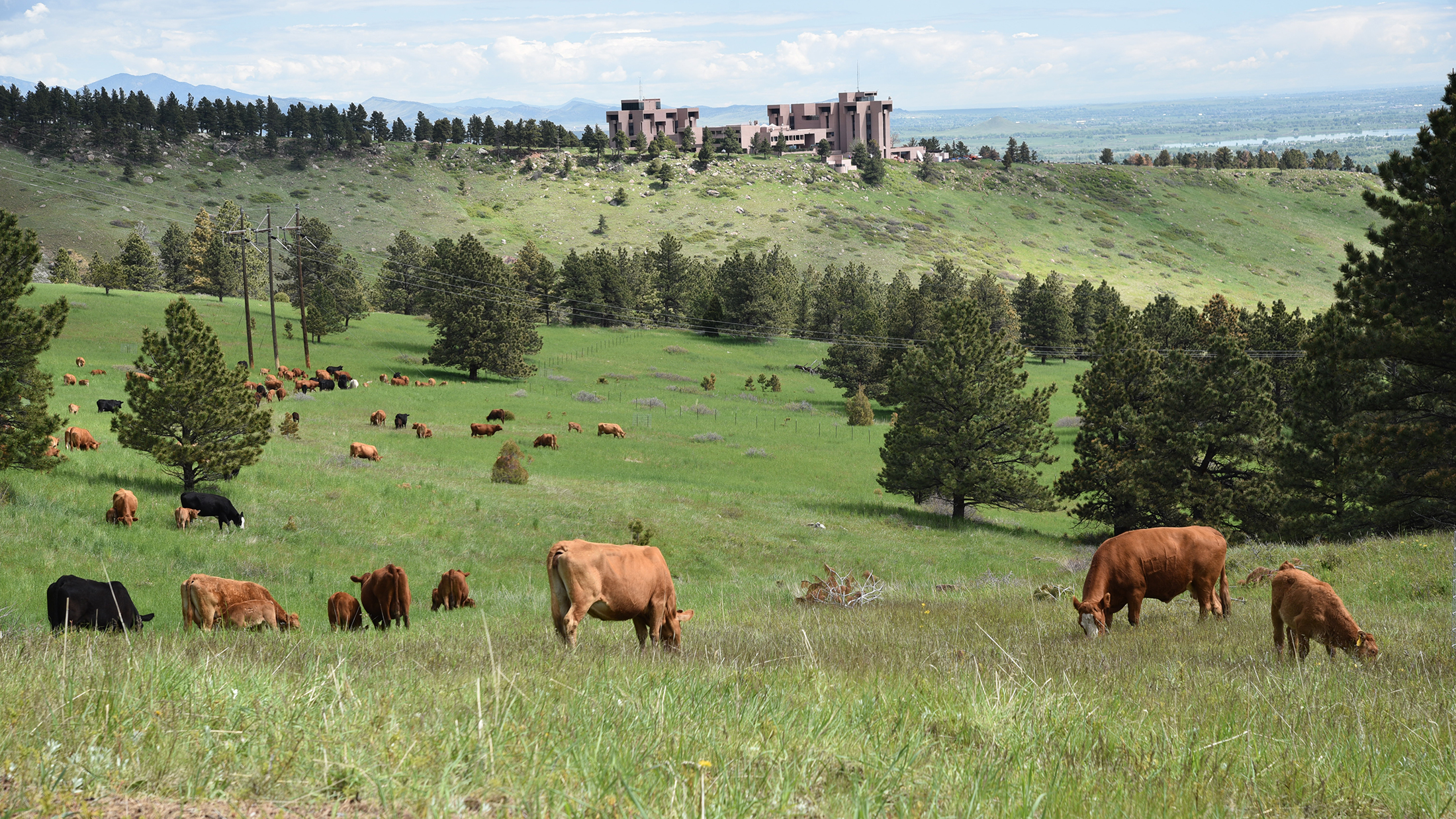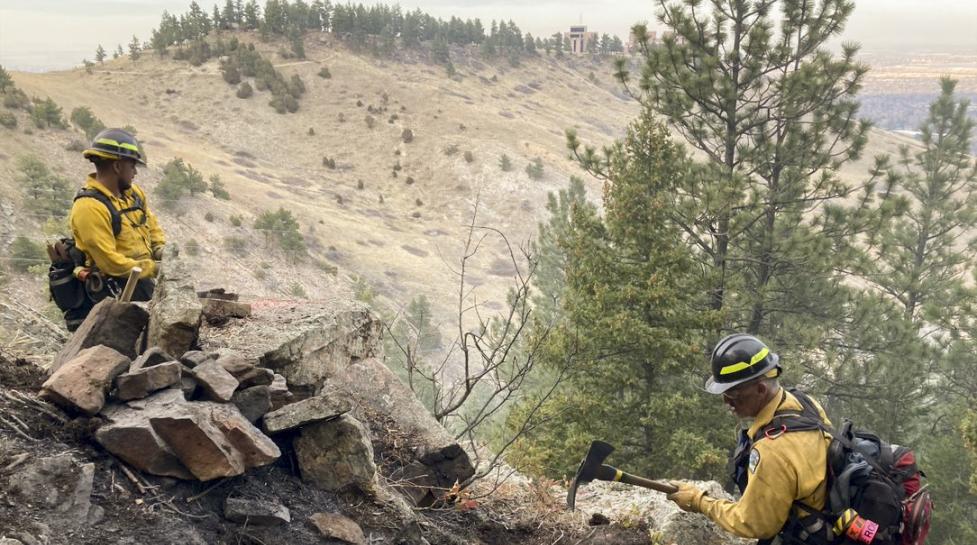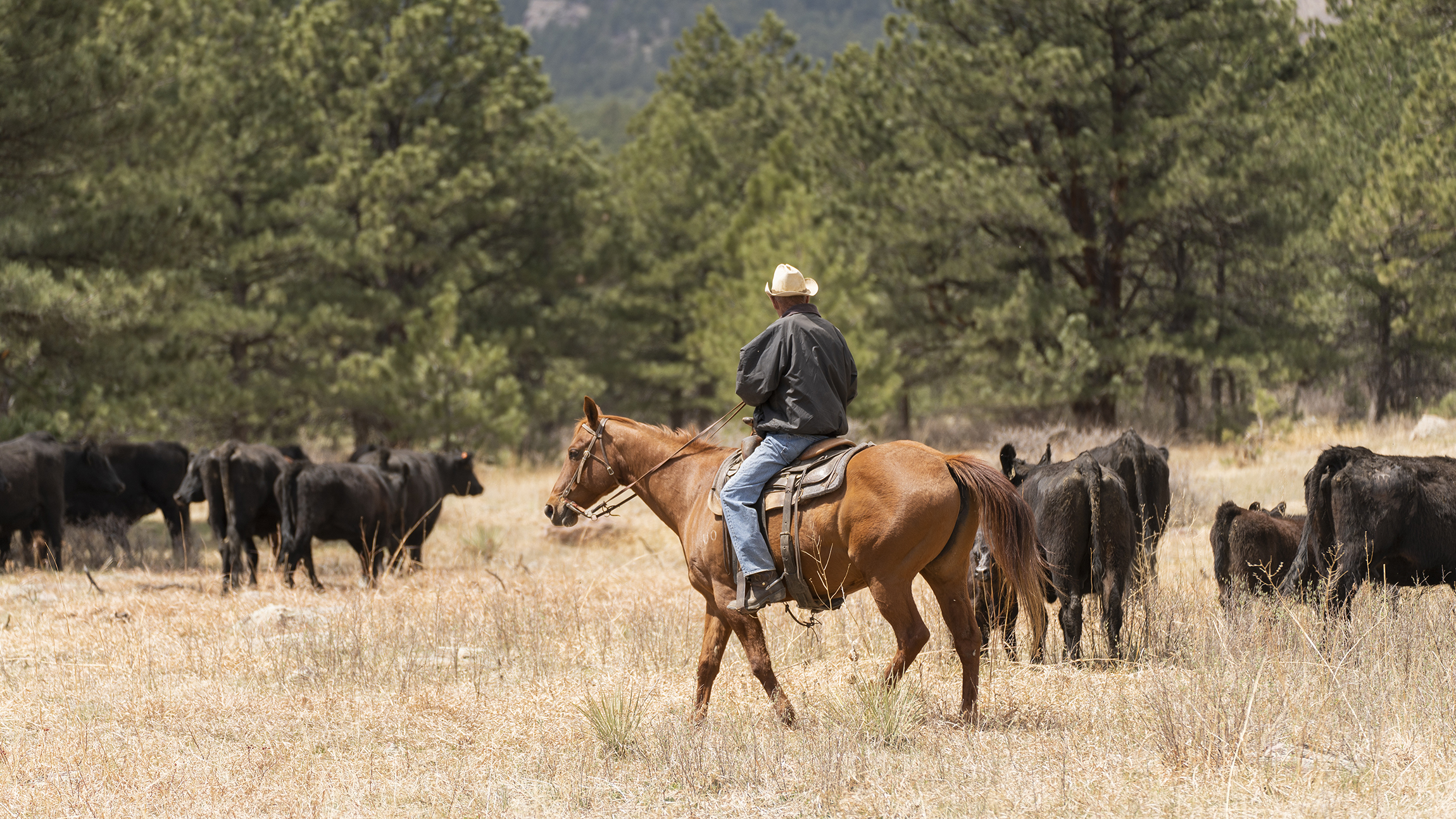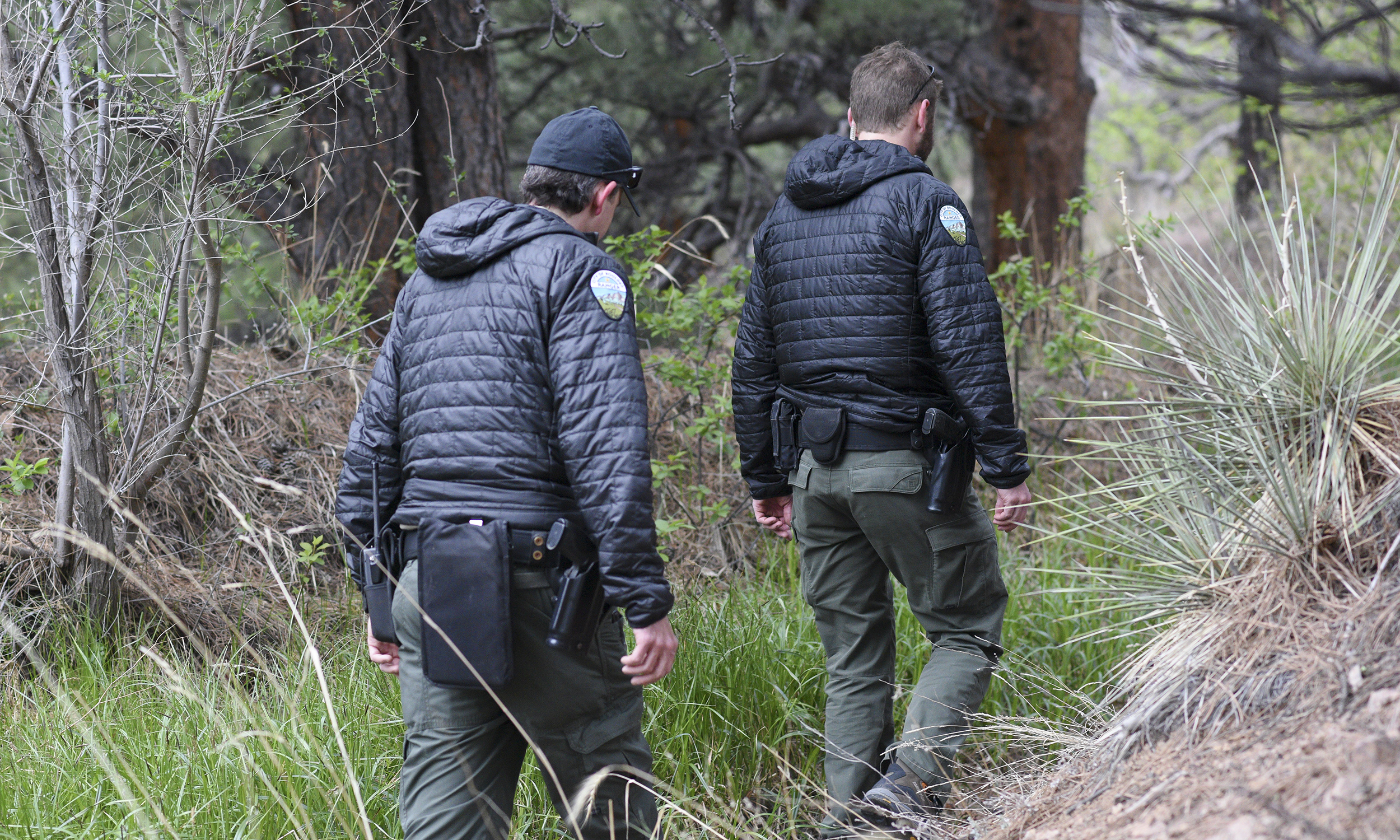Respect and obey all fire restrictions on city-managed land and any fire restrictions enacted by Boulder County and the City of Boulder. Always report illegal or unattended fires or signs of smoke in the air. Read on to learn more about what the City of Boulder is doing to reduce wildfire risks in shared open space. Take personal actions to help our community reduce shared risks and Be Wildfire Ready.
Don’t Start Wildfires!

Enjoy and Protect
The unique Boulder natural areas we all enjoy today have evolved with fire. While fire has long been essential in sustaining healthy ecosystems, it also poses risks to our community. Learn more about what the City of Boulder is doing to reduce shared wildfire risks in our Open Space and Mountain Parks!
Sustaining and Enhancing Open Space Wildfire Resilience
For generations, Boulder and other communities across the West have suppressed fires whenever they started. While well-intentioned at the time, the elimination of fire across our shared landscapes over hundreds of years has instead increased wildfire risks across the West. This legacy has caused vegetation overgrowth in important forest and grassland natural areas. At the same time, climate change is increasing our shared wildfire risks by extending fire seasons throughout the year, intensifying droughts that dry out vegetation, and causing more extreme weather conditions that accelerate fire spread.
For decades, the City of Boulder has worked to address fire risks and reduce the likelihood of extreme fires in city-managed open space. Today, our wildfire resilience efforts are focused on national wildfire strategies and will continue the fire mitigation work we've been doing for decades. Looking ahead, the city plans to enhance open space wildfire risk reduction work that has been effective and will implement new approaches to improve wildfire resilience through Boulder's recently adopted Community Wildfire Protection Plan.
Learn more about what the City of Boulder, the Open Space and Mountain Parks (OSMP) Department, and our city and community partners are doing to reduce shared wildfire risks by clicking on one of the city's open space wildfire resilience and risk reduction focus areas:
Remember: Boulder can have extreme wildfires, such as the Marshall Fire, which can overwhelm preventative land management strategies and response capabilities, making proactive community member preparedness absolutely essential. Be Wildfire Ready.
Be Wildfire Ready
Open Space Wildfire Risk Reduction Focus Areas
Resilient Landscapes
Landscapes, regardless of jurisdictional boundaries, are resilient to fire, insect, disease, invasive species and climate change disturbances, in accordance with management objectives. City open space wildfire risk reduction efforts mimic fire’s beneficial natural processes, which help to sustain healthy ecosystems that are more resilient to fire, remove excess vegetation and reduce the likelihood of extreme fires. Learn More

Cattle grazing has been an effective way to remove invasive weeds, helping to reduce wildfire risks and support native plant communities that are more resilient to fire. Open space risk reduction work in the area helped slow the NCAR Fire – which occurred under much less extreme conditions than the Marshall Fire – keeping it from becoming a more intense fire.
Fire-Adapted Communities
Human populations and infrastructure are as prepared as possible to receive, respond to and recover from wildland fire that impacts communities). For decades, the City of Boulder and its Open Space and Mountain Parks Department has worked to reduce wildfire risks and increase ecosystem health and has incorporated fire risk-reduction efforts in the department's ecosystem, agricultural and long-term strategic plans. Recently, the city has identified 13 open space wildfire resilience strategies in the recently adopted Community Wildfire Protection Plan. Discover More

City open space wildfire risk reduction efforts – including tree thinning, targeted cattle grazing, prescribed burning, and weed removal – were included in department ecosystem plans many years ago to help reduce community wildfire risks and support healthy open space natural areas. This summer, the city began mowing in city-managed open space near neighborhoods with higher wildfire risks to help fulfill the Community Wildfire Protection Plan. Photo by Nancy Lindo.
Safe and Effective Wildfire Response
All jurisdictions, responding in all land types, participate in making and implementing safe, effective and efficient risk-based wildfire management [and response] decisions. During recent fires, such as the Marshall and NCAR Fire, City of Boulder Open Space and Mountain Parks' Rangers have been critical in evacuating people from their homes and open space. At the same time, Open Space and Mountain Parks staff have assisted Boulder Fire-Rescue and area firefighters to battle recent fires. The city is also implementing a long-term “Presence on the Land” effort to help enhance city open space staff presence on the land to reduce wildfire risk and increase fire-detection and response efforts. Explore Further

City of Boulder Open Space and Mountain Parks staff help Boulder Fire-Rescue and other emergency responders battle the 2022 NCAR Fire. Many city Open Space and Mountain Parks staff members are trained to fight fire and have helped Boulder Fire-Rescue battle recent fires. Beyond helping fight fires, OSMP staff have been critical in helping community members evacuate open space trails when fires have occurred.
Resilient Landscapes
Forest Thinning
2025 Forest Thinning Projects
- Bison Drive-Kossler Forest Thinning (April – November): The Bison-Kossler forest thinning project on Flagstaff Mountain is a joint effort between the city’s Open Space and Mountain Parks and Utilities departments. The work is directly upwind from the city and is designed to improve forest habitat health and function while protecting drinking water infrastructure, hydroelectric generation facility infrastructure, and two key Xcel Energy powerlines. Addressing dense forest conditions in this area will build upon previous forest treatments, facilitate first responder access and emergency egress, and minimize the potential for fire spread into Boulder while improving overall forest health. This project will cover about 90 acres.
- Shanahan Ridge Forest Thinning (April – August): This forest health and fire mitigation project in the Shanahan Ridge area in south Boulder will focus on creating larger meadows and removing patches of small to medium diameter trees. Open forest conditions support more diverse vegetation communities, provide habitat for a wide variety of wildlife, and will reduce fuels adjacent to powerlines. This project will cover roughly 40 acres.
- Sanitas Valley Forest Thinning (June – August): The Sanitas Valley thinning project is located adjacent to the western edge of the city and involves removing some small to medium diameter trees along Dakota Ridge and limbing trees adjacent to the Sanitas Valley trail. The effort will reduce overall canopy cover along portions of the hogback and reduce ladder fuels adjacent to the trail, enhancing natural fuel breaks in the area. The project will cover about 25 acres.
- Flagstaff Road Forest Thinning (April – June): The Flagstaff Road thinning is located around OSMP infrastructure, including the Top Shop maintenance building, and in the Flagstaff Road corridor. The treatment prescription will focus on improving defensible space around the structure and decreasing fuel loads adjacent to the road. This will improve the road as a holding feature in the event of a wildfire and will build on past work that's been done up and down Flagstaff Rd to improve emergency egress in the area. This project covers about 20 acres.
2025 Winter Mitigation Work
This winter is the second year that OSMP has supported a year-round forest management crew. In 2023, OSMP expanded our winter staff to include five standard forest management positions dedicated to implementing forest health and fire mitigation projects year-round. This winter, forestry staff will expand efforts to address fuels in the wildland-urban interface on the west side of Boulder. Other wintertime priorities for OSMP forestry staff include working with Boulder Fire Rescue to plan and implement prescribed fire, supporting OSMP agricultural staff in managing hazardous fuels along ditches across the system, and creating defensible space around historic OSMP structures.
They will also focus on developing new trainings and projects for the 2025 field season. In early spring, the forest crew will welcome back an additional nine seasonal staff dedicated to forest health and fire mitigation projects as well as wildfire response on OSMP from March through November 2025.
2024 Forest Thinning Projects
Learn more about significant OSMP forest thinning projects in 2024 through our project webmap, our 2024 virtual open house webpage and a look back on 2024 community stewardship accomplishments.

A City of Boulder Forest Ecosystem Management crew thins trees on city open space south of Boulder. In 2024, the city conducted forest thinning on open space land just south of NCAR and in areas west of Boulder to protect vital infrastructure, including drinking water, hydroelectric facilities and key powerlines.
Livestock Grazing
Last year, marked the 10th year the city has worked with local ranchers who lease open space agricultural land to conduct prescriptive cattle grazing south of Boulder. Cattle grazing is the most cost-effective tool for managing vegetation in the rocky open space areas in south Boulder. It is an effective way to reduce invasive weeds, especially tall oatgrass, which can fuel wildfires. In 2024, OSMP expanded cattle grazing to areas near the National Center for Atmospheric Research. Learn more about how cattle grazing helps reduce fire risks and improve native plant communities.

A Boulder rancher manages cattle on city open space. For more than 10 years, City of Boulder staff have worked with local ranchers who lease open space agricultural land to conduct cattle grazing south of Boulder, helping us reduce invasive weeds and community wildfire risks.
Prescribed Burning
City of Boulder Boulder Fire-Rescue and Open Space and Mountain Parks work to restore the natural balance for Colorado’s fire-adapted ecosystems by conducting prescribed burns, which remove excess vegetation that can fuel wildfires and help improve plant and wildlife habitats. The city also conducts prescribed burns to help maintain agricultural properties, including in ditches that provide water for open space farming and ranching operations. The city will not perform a prescribed burn if it can’t be done safely nor meet city burn goals and state-mandated guidelines. Learn more about city prescribed burning work.

A City of Boulder Fire-Rescue firefighter puts out hot spots during a prescribed burn on open space on Shanahan Ridge just south of Boulder. Prescribed burning can help restore the natural balance for Colorado’s fire-adapted ecosystems and reduce wildfire fuels in city open space forest areas.
Weed Management
Native plant communities in Boulder’s open space are naturally resilient to fire, but invasive weeds and plant species threaten them. In 2024, the city treated over 6,000 acres for invasive weed species in city-managed open space, contributing to healthier and more fire-resistant landscapes. Vegetation Stewardship staff also removed 30,000 pounds of Russian olives, a non-native tree common across the eastern portion of the city’s Open Space and Mountain Parks system.

City of Boulder vegetation stewardship staff remove invasive weeds on open space. The department focuses on removing state-designated noxious weeds, including Mediterranean sage, purple loosestrife, Japanese knotweed, hairy willow-herb, cut-leaf teasel and oxeye daisy.
Fire-Adapted Communities
City Open Space Strategic Fire Planning
For decades, the City of Boulder has worked to reduce wildfire risks and increase ecosystem health in city-managed open space and has incorporated fire risk-reduction efforts in the city's Forest Ecosystem Management (1999), Grassland Ecosystem Management (2010), Agricultural Resources Management (2017) and Master (2019) plans. Strategies in these long-term ecological, planning and recreation plans focus on improving ecosystem health while also reducing fire risks for the Boulder community. They also guide City of Boulder's Open Space and Mountain Parks' annual fire-risk reduction work, including tree thinning, cattle grazing, prescribed burning and weed management efforts.

The city's Forest Ecosystem Management and Ecosystem Management plans recognize that mimicking fire’s natural processes – such as tree thinning – can help reduce the risk of extreme wildfires and sustain natural areas. The plans also help guide City of Boulder Open Space and Mountain Parks' annual fire-risk reduction work, including tree thinning, prescribed burning and weed management efforts.
New Initiatives in the Wildland Urban Interface
In 2024, the City of Boulder launched a pilot Perimeter Mowing Program, an initiative identified in the Community Wildfire Protection Plan, to reduce wildfire risks in city-managed open space near residential areas. The program focuses on mowing 30-foot strips of open space adjacent to four neighborhoods. It aims to reduce grass vegetation to a safer height of 4-6 inches, helping to create defensible space and limit fire spread. Mowing areas were selected using wildfire risk mapping, open space ecological data, and proximity to homes, and mowing is timed to provide the greatest opportunity to help reduce wildfire risks while minimizing impacts to sensitive wildlife and plant habitats. Perimeter mowing will be extended to other communities in the Wildland Urban Interface, along with strategic and targeted grazing, forest thinning, prescribed fire, and other fuels management techniques to apply wildfire risk reduction projects in the areas closest to where people live alongside city-managed open space.

Boulder Ready to Work Crews assist City of Boulder Open Space and Mountain Parks in mowing areas adjacent to city neighborhoods with higher fire risks. The mowing program helps complement current open space wildfire risk-reduction strategies, such as cattle grazing, forest thinning and prescribed burning. Photo by Nancy Lindo.
Community Wildfire Protection Plan
The City of Boulder recently adopted a Community Wildfire Protection Plan – which identifies risks in the Wildland Urban Interface, the area where wildland fuels and human development meet. A crucial aspect of the plan was the recommendation strategies for reducing the risk of hazardous fuels, enhancing public outreach and education, lowering the ignitability for structures, and improving fire response capabilities. The plan identified 13 “Resilient Landscape” strategies to sustain natural ecosystem health and reduce wildfire risks in city-managed opens space:
- Implement the ecological and wildfire mitigation strategies in [current Open Space and Mountain Parks' land management plans].
- Work with private landowners and other partners to reduce hazardous fuels on private lands.
- Collaborate between private, local, state, and federal partners to plan and conduct cross-boundary fuel treatments.
- Reduce heavy fuels in proximity to utility lines.
- Develop prescriptions and implement hazardous fuels reduction projects in strategic locations, targeting grass, and grass/shrub fuel models at the landscape and community level.
- Conduct fuel treatments along ingress/egress routes.
- Develop prescriptions and implement hazardous fuels reduction projects in strategic locations, targeting timber (tree) fuel models at the landscape and community level.
- Safeguard critical drinking water and wastewater infrastructure.
- Establish biomass utilization/sort yard facilities to support wildfire prevention and environmental sustainability.
- Enhance comprehensive noxious weed and high-hazard vegetation mitigation strategies throughout open space areas and within communities.
- Utilize controlled, prescribed burning techniques strategically across the landscape to reduce accumulated flammable vegetation.
- Address hazardous fuels along irrigation ditches and laterals in coordination with ditch companies.
- Implement a vegetation overgrowth, rubbish, and debris removal program for planning area residents.

A Community Wildfire Protection Plan (CWPP) is a collaboratively created comprehensive and strategic plan that recommends wildfire risk reduction measures to protect people, property, and natural and cultural resources. The CWPP is developed with the participation of community members, community leaders, land managers, fire personnel and other stakeholders. Photo by Jack Sasson.
Presence on the Land
City of Boulder Open Space and Mountain parks is implementing a long-term “Presence on the Land” effort to enhance Ranger, Education and Outreach and volunteer presence in city-managed open space to help communicate wildfire risk reduction reminders on open space and increase fire-detection efforts. The City of Boulder recently added temporary staff and positions and increased volunteer services as part of this effort, which is focused on increasing staff presence in highly visited areas, particularly on the western edge of the city’s open space system.

City of Boulder efforts to increase Open Space and Mountain Parks staff and volunteer presence in highly visited areas falso ocuses on encouraging visitors to practice responsible recreation, such as actions they can take to prevent wildfires. Learn more about giving back to the land we all love at VolunteerOSMP.org.
Safe and Effective Wildfire Response
City Open Space Emergency Response
During recent fires, such as the Marshall and NCAR Fire, City of Boulder Open Space and Mountain Parks Rangers have been critical in evacuating people from their homes and open space. At the same time, department staff, including Rangers, have assisted in battling area fires. Many open space staff members – including Rangers and the city's Forest Ecosystem Management crew – are "red carded," meaning they are trained to fight fires. Boulder Open Space and Mountain Parks is partnering with emergency responders across Boulder, including Boulder Fire-Rescue, to help improve fire response capabilities.

A Boulder Fire-Rescue firefighter helps put out the 2022 NCAR Fire. City of Boulder Open Space and Mountain Parks Rangers and other department staff members have helped other agencies fight recent wildfires and helped Boulder Fire-Rescue conduct prescribed burning on open space.
Patrols and Detection of Wildfire Ignitions
City of Boulder Open Space and Mountain Parks Rangers actively patrols areas where illegal campfires and other ignition sources are more likely to be found. City open space wildland firefighters also partner with Boulder Fire Rescue to provide increased staffing during elevated wildfire risk conditions so that firefighters can rapidly respond when a wildfire occurs.

City of Boulder Open Space and Mountain Parks Rangers conduct morning patrols on open space in west Boulder. City open space Rangers are often among the first responders to wildfires and play an important role in helping our community prevent, respond and put out wildfires.
Responsible Recreation Reminders
- Enjoy and protect open space. We invite community members to visit open space but remind everyone of their responsibility to protect the land and our community from wildfire. DO NOT participate in outdoor behaviors that threaten our community.
- Know city fire regulations. All ignition sources – including fireworks, cigarettes and campfires – are prohibited on City of Boulder Open Space and Mountain Parks lands.
- Know the current fire risk. Check and follow all fire restrictions and fire bans instituted by local authorities.
- Stay alert when on the trail. The outdoor environment is a rapidly changing environment. Unexpected terrain challenges and natural hazards may be present. Be aware of what's in front of you and your surroundings.
- Create a plan. Download a trail map and carry a print map. Develop a backup plan for adverse weather or emergencies, such as fires and floods. Know where you are going and consider alternative routes you can take to leave the area.
- Charge your phone. Make sure your phone is charged in case you need assistance or if there is an emergency. But remember: Cell service may be extremely limited in mountain locations. Call 911 if there is an emergency, such as a fire starting or if you see smoke. Try to text 911 if you don’t have enough cell service to get a phone call through.

Remember: Recreate responsibly to help prevent wildfires on open space. Learn more responsible recreation reminders through our "10 Essential Tips to Enjoy and Protect Boulder Open Space and Parks" webpage.
Trails as Fire Roads and Fire Breaks
Many of City of Boulder Open Space and Mountain Parks' trails serve as fire roads – such as NCAR-Bear Canyon – providing fire trucks critical access to Boulder's mountain backdrop. During the recent NCAR Fire, open space trails helped firefighters respond to the fire and served as "fire breaks," which can help limit the spread of fire. Boulder Open Space and Mountain parks works with Boulder Fire Rescue and other partners to ensure the key access routes and fire breaks are appropriately maintained.

City of Boudler open space trails are critical in providing emergency vehicle access to open space. As part of numerous projects to repair trail damage from the 2013 floods, the city focused on ensuring firefighting and search-and-rescue vehicles could regain access to rugged open space trails in Boulder’s mountain backdrop.